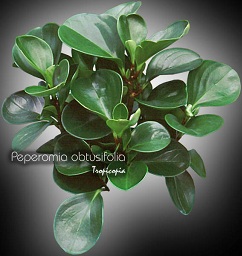Table of contents
Baby rubber plant

Latin Name: Peperomia obtusifolia
Category: Other
Family: Piperaceae
Origin: Venezuela
Climate: Tropical
Growing Zones: 11-11
Care Instructions
The Baby rubber plant (Peperomia obtusifolia) is a tropical plant that originates from Venezuela. This other plant belongs to the Piperaceae family and is well-suited for growing in USDA zones 11-11.
Complete Care Guide for Baby Rubber Plant (Peperomia obtusifolia)
Watering Requirements
The Baby Rubber Plant, or Peperomia obtusifolia, thrives on a careful watering schedule that mimics its native tropical environment. It is crucial to allow the top inch of soil to dry out between waterings, as this plant is susceptible to root rot if overwatered. During the growing season, which typically spans from spring to early fall, water the plant every 1-2 weeks, adjusting frequency based on humidity and temperature. In the winter months, reduce watering to once every 2-3 weeks, as the plant enters a dormant phase. Always ensure that the pot has drainage holes to prevent water from accumulating at the bottom, which can lead to root issues.
Light Conditions
The Baby Rubber Plant prefers bright, indirect light but can also tolerate low light conditions, making it an excellent choice for indoor spaces. Direct sunlight can scorch its leaves, so it’s best to place it near a window with filtered light or in a well-lit room. If the plant is not receiving enough light, you may notice its growth slowing down and the leaves becoming leggy. Conversely, if the leaves start to yellow or develop brown spots, it may be receiving too much direct sunlight. For optimal growth, aim for a balance of bright, indirect light for at least 6 hours a day.
Soil Preferences
The ideal soil for a Baby Rubber Plant is a well-draining potting mix that retains some moisture without becoming soggy. A blend of standard potting soil mixed with perlite or sand can provide the right balance of drainage and moisture retention. This plant does not require heavy fertilization; however, during the growing season, you can feed it with a balanced, water-soluble fertilizer diluted to half strength every 4-6 weeks. Avoid fertilizing in the winter months when the plant is dormant, as this can lead to nutrient buildup and potential root damage.
Pests and Diseases
While the Baby Rubber Plant is generally resilient, it can be susceptible to common houseplant pests such as spider mites, mealybugs, and aphids. Regularly inspect the undersides of leaves and the stems for any signs of infestation. If you notice pests, treat the plant with insecticidal soap or neem oil, ensuring to cover all affected areas. Additionally, overwatering can lead to fungal diseases like root rot and leaf spot. To prevent these issues, maintain proper watering practices and ensure good air circulation around the plant. If you encounter any diseased leaves, prune them promptly to prevent the spread of infection.
Special Care Tips
To keep your Baby Rubber Plant healthy and thriving, consider the following special care tips: First, regularly wipe the leaves with a damp cloth to remove dust, which can hinder photosynthesis. This also helps to keep the plant looking vibrant and lush. Additionally, if you notice the plant becoming leggy, you can pinch back the stems to encourage bushier growth. This plant is also sensitive to cold drafts, so avoid placing it near air conditioning vents or drafty windows. Lastly, if you want to propagate your Baby Rubber Plant, you can do so easily through leaf cuttings or stem cuttings, which can be rooted in water or directly in soil.








